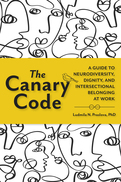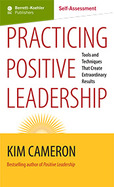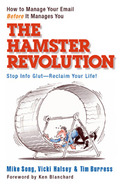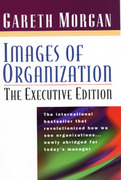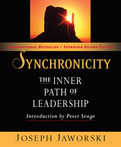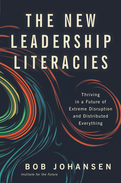2024
How do we build win-win organizational systems?
From a member of the Thinkers50 2024 Radar cohort of global management thinkers most likely to impact workplaces and the first person to have written for Harvard Business Review from an autistic perspective comes The Canary Code—a guide to win-win workplaces.
Healthy systems that support talent most impacted by organizational ills—canaries in the coal mine—support everyone.
Currently, despite their skills and work ethics, members of ADHD, autism, Tourette Syndrome, learning differences, and related communities face drastic barriers to hiring and advancement. In the U.S., 30-40% of neurodivergent people and 85% of autistic college graduates struggle with unemployment. Like canaries in the mine, they are impacted by issues that ultimately harm everyone. Lack of flexibility, transparency, and psychological safety excludes neurodivergent, disabled, and multiply marginalized talent—and leaves most employees stressed and disengaged.
This unique book is a guide to change-making for CEOs, managers, HR leaders, and everyone who wants to contribute to building a more inclusive world.
The authors' over 25 years of experience spanning global diversity to neurodiversity leadership and extensive research on innovative practices of uniquely inclusive organizations around the world inform this books':
- Explicitly intersectional approach to (neuro)inclusion
- Holistic understanding of humans and their social, cognitive, emotional, and physical differences.
- Holistic approach to organizational talent practices, from creating job descriptions and recruiting to onboarding, performance management, and leadership development.
- A globally inclusive approach that centers, celebrates and invites multiple voices from the neurodivergent community.
- A lead from where you are approach to change-making.
Product: Online streamed self-assessment application (not downloaded), limited one-year subscription (5 tests or 12 months, whichever comes first), password controlled
Duration: 68 questions in ten categories (the first five related to Positive Leadership book; the second five related to the Practicing Positive Leadership book): 1) Positive Climate, 2) Positive Relationships, 3) Positive Communications, 4) Positive Meaning, 5) Personal Managemnt Interviews, 6) Create a Culture of Abundance, 7) Developing Positive Energy, 8) Accomplishign Everest Goals, 9) Deliver Negative Feedback Positively, 10) Apply in Organizations. The self-assessment takes 15-20 minutes to complete.
Results: You will receive a radar graph that shows your relative strenths and weaknesses in the ten areas described above. The author also offers interpretation of your results and provides references for each of the ten areas in his two books, Positive Leadership (questions 1-24) and Practicing Positive Leadership (questions 25-68). By reading your results, you can gain important insights on how to practice positive leadership in your organization. The author addresses next steps both for the individual and groups. There are also opening and closing statements from the author, the ability to compare current and former results, and a print option.
BASED ON THE BOOK: PRACTICING POSITIVE LEADERSHIP Over a decade ago, Kim Cameron and some colleagues decided that rather than analyze what went terribly wrong with organizations and how to prevent it, they would look at what went extraordinarily right and how to replicate it. This was the birth of positive organizational scholarship, a new field that focused on what they called "positive deviance"-outcomes that far exceeded normal success.
In his previous book Positive Leadership, Cameron outlined four leadership strategies-Positive Climate, Positive Relationships, Positive Communications, and Positive Meaning-that characterize exceptionally high-performing organizations. Here he takes these strategies further by laying out tactics for implementing them:
- Creating a Culture of Abundance: five specific steps leaders can take to create an organizational culture that enables members to experience vitality, flourishing, and engagement
- Developing Positive Energy Networks: tools and practices for cultivating positive energy in oneself and for diffusing it throughout the organization
- Delivering Negative Feedback Positively: techniques for delivering difficult but necessary messages in ways that build and strengthen relationships
- Establishing and Achieving Everest Goals: guidelines for setting goals that have all the characteristics of SMART goals but go far beyond them
- Applying Positive Leadership in Organizations: a powerful tool for determining exactly how to implement positive leadership practices in the particular circumstances of your organization
Study after study (some of which are cited in the book) has shown that companies practicing positive leadership far outperform their competitors. So virtue may be its own reward, but it also delivers breakthrough results that any organization can achieve thanks to Kim Cameron's concise, how-to guide.
PURCHASER AND USER NOTE: If you are an individual consumer newly purchasing the assessment, go directly to the shopping cart by clicking the "add to cart" icon to your left. If you are a member of an organization that has purchased a bulk order, or if you already bought the assessment in the last 12 months and are retaking it now using the original Access Key to retake the assessment please log in here. New registrants: Please enter your "Access Key" into the input field to enter the self-assessment for the first time. A note to frequent purchasers: You cannot use your current bkconnection.com password for this product; you must create and use a new password. For any questions, please contact the support desk at 800-929-2929 (8 am-9 pm Eastern U.S. time, Monday through Friday), or [email protected]. Thank you.
Just in time, Harold meets a coach—a leading expert on email efficiency and etiquette with a simple system that helps Harold eliminate needless emails, write better messages, and file and find information in a flash. He gets immediate results—and reclaims his life.
The Hamster Revolution is chock-full of practical advice that really works. Included is a landmark case study that shows how 2,000 Capital One associates cut their email time by 23 percent while improving overall email quality by 52 percent.
Professionals waste up to a month per year on email—costing their companies billions in missed opportunities. The good news? Hope and help are here. The Hamster Revolution is the definitive book for our times.
- An international bestselling classic (over 250,000 copies sold of the first edition), newly revised for today's managers
- Recognized as one of the most influential management texts of the last decade, Images of Organization revolutionized the way we look at organizations
- This classic book has been revised, updated, and abridged to meet the needs of today's managers
- Copublished with Sage Publications
This pioneering work is based on a simple premise with profound implications: All organization and management theories are based on images, or metaphors, with paradoxical effects: they can create profound insights but also grotesque distortions. Morgan makes his case by showing how theories of organization and management have been shaped by a few powerful metaphors-most notably those of the machine, the living organism, culture, politics, and, more recently, the learning organization, complexity, chaos, flux, and change. With this seminal work, he shows how managers can avoid superficial management fads by selecting metaphors wisely and then using them creatively to generate insights, ideas, and new ways of working.
As the first book to offer a concrete method for integrating the strengths and overcoming the weaknesses of competing management perspectives, Images of Organization has established itself as a classic and influenced management thinking throughout the world. The new edition retains all the vitality of the original and has been updated to integrate significant research of the last decade. It has also been abridged and revised to increase its accessibility and usefulness for managerial audiences.
Images of Organization-The Executive Edition is a monumental work. No other management book covers so much ground while developing the implications for management with such force. Morgan is a master of the links between theory and practice. He has a gift for stripping complex ideas to fundamentals, and for fusing a kaleidoscope of insights into practical schemes for reading and shaping organizational life. This essential volume provides the kind of organizational "radar" system managers need to negotiate the demands of the 21st century. It is a resource they will turn to again and again.
- An international bestselling classic (over 250,000 copies sold of the first edition), newly revised for today's managers
- Recognized as one of the most influential management texts of the last decade, Images of Organization revolutionized the way we look at organizations
- This classic book has been revised, updated, and abridged to meet the needs of today's managers
- Copublished with Sage Publications
2011
It's too late to catch up, but it's a great time to leapfrog. Noted futurist Bob Johansen goes beyond skills and competencies to propose five new leadership literacies—combinations of disciplines, practices, and worldviews—that will be needed to thrive in a VUCA world of increasing volatility, uncertainty, complexity, and ambiguity. This book shows how to (1) forecast likely futures so you can “look back” and make sure you're prepared now for the changes to come, (2) use low-risk gaming spaces to work through your concerns about the future and hone your leadership skills, (3) lead shape-shifting organizations where you can't just tell people what to do, (4) be a dynamic presence even when you're not there in person, and (5) keep your personal energy high and transmit that energy throughout your organization.
This visionary book provides a vivid description of the ideal talent profile for future leaders. It is written for current, rising star, and aspiring leaders; talent scouts searching for leaders; and executive coaches seeking a fresh view of how leaders will need to prepare. To get ready for this future, we will all need new leadership literacies.


